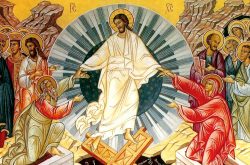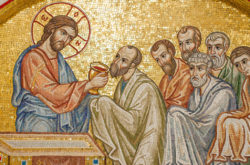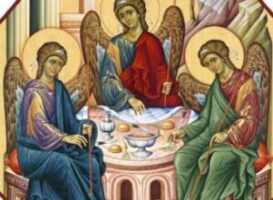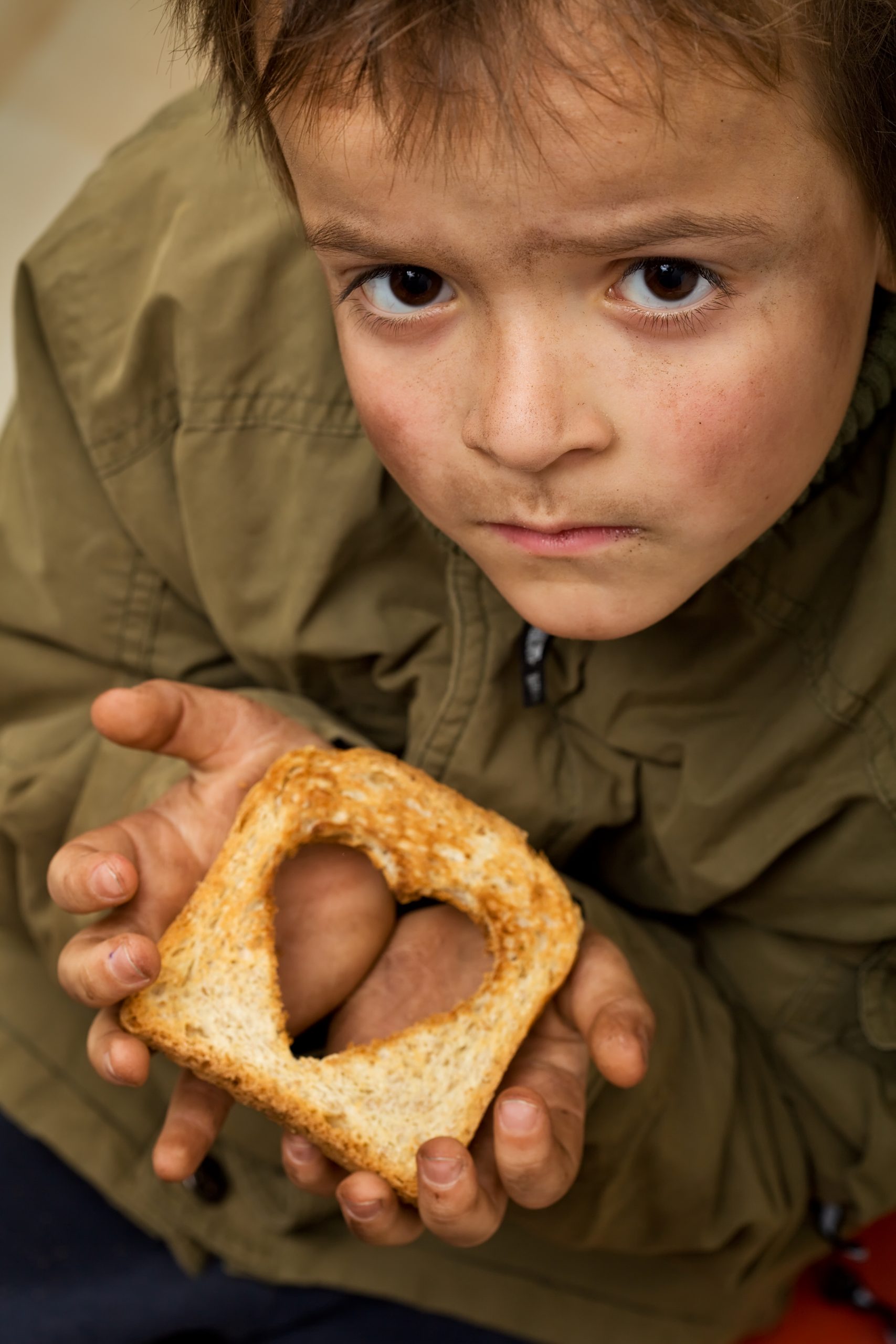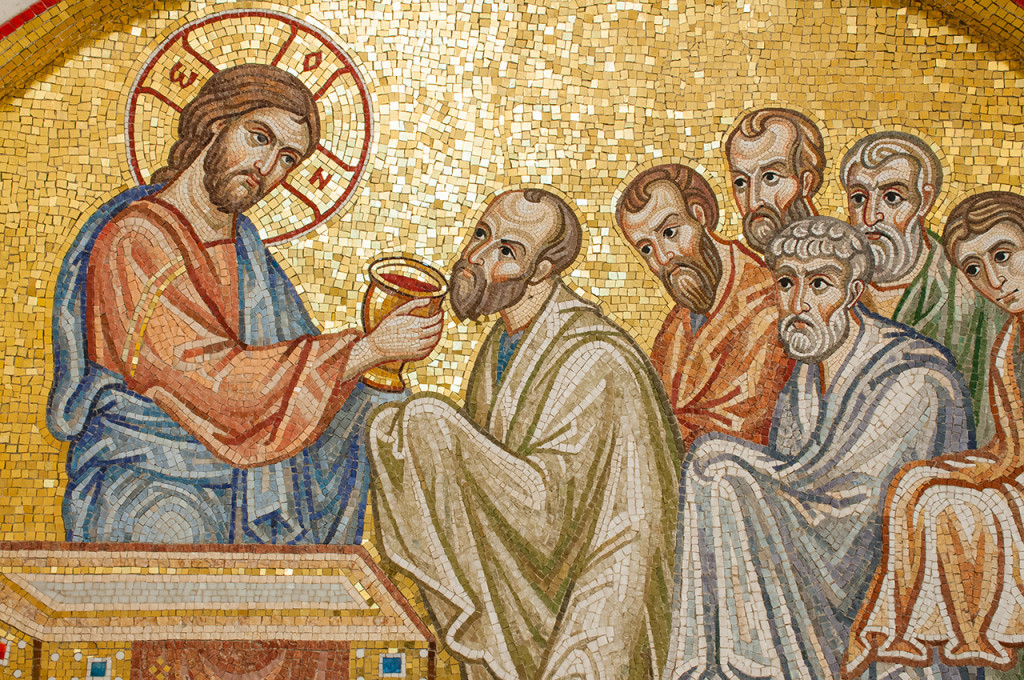對馬利亞的尊崇不是對基督的額外崇拜。相反,它是一種延伸,是獻給基督的崇拜的質量或重點。為了理解這一點,我們必須簡要地列出拜佔庭禮儀中最重要的馬利亞學主題。
尼亞-埃烏
因為基督是新亞當,馬利亞經常被稱為新夏娃。這揭示了教會對她的尊崇的救恩論層面。教會在馬利亞身上集中了《聖經》中關於上帝與創造物、救主與世界之間關係的所有見解和經驗,作為一種愛的奧秘,在世界上最密切的表現就是男女關係。上帝愛教會就像男人愛妻子。 或者,更準確地說,人類之愛的奧秘反映了上帝對受造物之愛的奧秘。
因此,馬利亞代表了受造本身的 “女性氣質”,這意味著回應了愛、順從、自我奉獻,準備完全生活在他人之中並為他人服務。女人 “回應 “男人的倡議並跟隨他,正是通過這種完全的奉獻,她找到了自己的實現。
夏娃實際上在女性方面是失敗的,因為她採取了主動,從而破壞了受造者本體秩序,成為罪的根源。上帝的選民未能在愛和順從中成為主的僕人。
這就是為什麼是馬利亞她在完全順從中取代了受造者秩序中絕對重要的主旨。當我們在聖母領報日聽到決定性的 “看哪,主的婢女照你的話成就在我身”(路加福音1:38)時,永恆的春天之光臨到我們。這是所有的受造物,所有的人類,我們每個人明白經文所闡明我們最終的性質和實質,我們接受成為 “上帝的新娘”,對那位在世界開始之前就愛我們的人獻上。
馬利亞在上帝面前不僅是女人或婦女的代表。她是所有受造物、所有人類的形象,是對基督和上帝的回應。馬利亞的傳統形象中得到了美好的表達嗎?”比天堂更寬廣”,聖像畫呈現在拜占庭教堂祭壇後上方。
形象
作為新造物的核心,馬利亞是基督的形象。教會是形象,教會是生命。從宗教改革和反宗教改革時期發展起來的教會學,幾乎只關注教會的制度方面、”男性 “方面、教規和管轄結構、等級制度和秩序。
這些對教會來說都是必要的,是不可少的。但這一切都不是教會;沒有任何議會,沒有任何教會當局批准了這一點。它是教會本身的直接和活生生的經驗,它發現了教會與馬利亞的這種身份。
教會的生活是以馬利亞為參照所表達的。對馬利亞的崇敬是指對教會的崇敬。教會的虔誠是馬利亞學的,因為馬利亞是這種虔誠的體現—馬利亞是其形象、方向和運動。她是在敬拜和自我奉獻的精神中永遠活著的那一位。
國度的預示
作為受造物的形象,教會的形象,馬利亞也是 “神秘日子的黎明”–天國的預示。她是神學家們經常提到的 “可理解的末世論 “在我們中間的存在。
教會知道,她是 “永恆的童貞女”,也是 “死後的活人”(聖母安息節的Kontakion)。
相反,是她的死亡被上帝完全充滿了生命。正是她與基督的完全合一,摧毀了她的死亡,並使她成為共同復活的開始和開端。在她身上,這個世界的一部分完全得到了榮耀和收穫,因此,這就是天國的 “奧秘的黎明”。
我們的母親
她站在十字架附近。一把劍刺穿了她的靈魂,”彷彿從許多人的心裡透露出冥想”(路加福音b.,35)。每個星期三和星期五,教會都會記念馬利亞受苦和憐憫的奧秘,並在教堂的美麗詩篇中表達出來。
在這裡,馬利亞被看作是保護者和中保者。她與所有的苦難,與人類在這個世界上的生活,作為悲劇和苦難相認同。她是作為母親,教會的形象。
===============
“因為她已經成為天堂和神性的殿堂” …. 而卡瓦西拉的聖尼古拉說,當上帝創造萬物,看到它們時,看到並說它們是 “善”,這種 “善 “這種美和這種善,是關於聖母的。這就是說,他們都是 “好事”,因為他們導致了聖母馬利亞,因為最後聖母馬利亞會出生。因此,馬利亞是所有受造物的目的,也是《舊約》所有等待的終點。
那麼,她 “從母腹中 “成聖,因為她的父母親約阿希姆和安妮大量禱告的結果,他們祈求上帝給他們一個孩子,並將她完全獻給上帝,她從嬰兒期就被獻給上帝。
而我們聽到教會在聖母進殿的儀式上頌唱:”聖殿是聖潔的,聖靈中的羔羊是聖潔的”。在那裡,聖母待了很多年,她被天使的食物所餵養,當她到了成熟的年齡,許配給約瑟夫,她接受了天使的擁抱,現在能夠對天使的信息說 “是”,說 “按照你的成就於我”,接受上帝的意願在她身上得到實現。並從那時起,藉著她整個生命,神的兒子聖言道成了肉身。因此,她成為 “最寬廣的天堂”,天使的女王,她是真正配得讓地球成為天堂的人。
The theological significance of the Maria
The honor to Mary is not an additional worship to that of Christ. Rather, it is an extension, a quality or emphasis of the worship offered to Christ. To understand this, one must briefly list the most important Mariological themes of the Byzantine liturgy.
The Nea E u a a
Because Christ is the new Adam, Mary is very often referred to as the new Eve. This reveals the soteriological dimension of the Church’s honorific veneration of her. The Church has concentrated in Mary all the biblical insight and experience of the relationship between God and creation, the Saviour and the world, as a mystery of love, whose closest expression in this world is the male-female relationship. God loves the Church as a man loves his wife. Or, to be more precise, the mystery of human love reflects the mystery of God’s love for His creation.
Thus Mary represents the “femininity” of creation itself, which means responsive love, obedience, self-giving, the readiness to live exclusively in and for the other. The woman “responds” to the man’s initiative and follows him, and it is through this total giving that she finds her fullness.
Eve actually failed in being a woman because she took the initiative and thus disrupted the ontological order of creation, and became the cause of sin. God’s chosen people failed to be the Lord’s servant in love and obedience.
That is why it is Mary, who in her total obedience replaced something absolutely essential in the order of creation. The light of the eternal spring comes to us when on the day of the Annunciation we heard the decisive “Behold the handmaid of the Lord be born to me according to thy word” (Luke 1 .38). This is all of creation, all of humanity, and each of us recognizes the words that express our ultimate nature and substance, our acceptance of being “the bride of God,” our devotion to the One who loved us before the world began.
Mary is not the representative of the woman or women before God. She is the image of all creation, of all humanity, in response to Christ and God. Is this beautifully expressed in the traditional image of Mary? “Plate of Heaven”, which is very often found in the arch of Byzantine churches.
Image
Being the heart of the new creation, Mary is an image of Christ. The Church is image, and the Church is life. Ecclesiology, as developed from the time of the Reformation and Counter-Reformation, has been concerned almost exclusively with the institutional aspect of the Church, the “masculine” aspect, canonical and jurisdictional structures, hierarchy and orders.
All of these are necessary and essential to the Church. But all this is not the Church; no council, no ecclesiastical authority has ratified this. It is the direct and living experience of the Church itself, which has discovered this identity of the Church with Mary.
The life of the Church is expressed with reference to Mary. Venerable veneration to Mary is expressed with reference to the Church. The piety of the Church is Mariological, because Mary is the embodiment of this piety – of which Mary is the image, its direction and its movement. She is the One eternally alive in worship and in the spirit of self-giving.
Foreshadowing of the Kingdom
As the image of creation, the image of the Church, Mary is also “the dawn of the mysterious day”-the foreshadowing of the Kingdom of God. She is the presence among us of that “intelligible eschatology” so often referred to by theologians.
the Church knows that she who is “virgin after the token” – is also “living after death” (Kontakion of the Feast of the Dormition),
Instead, it is that her death was completely filled with life by God. It is her total unity with Christ that destroyed her death, and made her the beginning and inauguration of the common resurrection. In Her a part of this world is completely glorified and reaped, and thus it is the “dawn of the mysterious day” of the Kingdom.
Our Mother
She stood near the Cross. A sword pierced her soul, “as if meditations were revealed from many hearts” (Luke b., 35). Every Wednesday and Friday the Church remembers the mystery of Mary’s suffering and mercy and expresses it in the beautiful poetry of the church.
Here Mary is seen as protector and intercessor. She identifies with all suffering, with human life in this world, as tragedy and pain. So she is an image of the Church as Mother.
===============
“For she has become heaven and the temple of the divinity” …. And St. Nicholas of Cavasila says that when God created all things and, seeing them, saw and said that they were “goodness”, this “goodness” this beauty and this goodness, was about the Virgin Mary. That is to say, they were all “good things” because they led to the Virgin Mary, because in the end the Virgin Mary would be born. Thus, Mary is the purpose of all creation and the end of all Old Testament waiting.
She, then, who was sanctified “from her mother’s womb,” precisely because she was the fruit of much prayer on the part of her parents, Joachim and Annie, who asked God to give them a child and to dedicate her entirely to God, was consecrated to God from infancy.
And we hear the Church sing in the service of the Presentation of the Presentation that “the holy of holies is holy, and the Lamb in the Holy Spirit is holy.” There the Virgin stays for years, there she is nourished with Angel’s food, and when she reaches a mature age and has Joseph as her suitor, she receives the archangelic embrace, and is now able to say “yes” to the Angel’s message, to say “bless me according to your word”, to accept that God’s will be done in her. And from then on, to become the one who, through her whole being, incarnates the Son and Word of God. And thus, she becomes the “broadest of the heavens”, the Queen of Angels, and the one who truly deserves to make the earth heaven.
